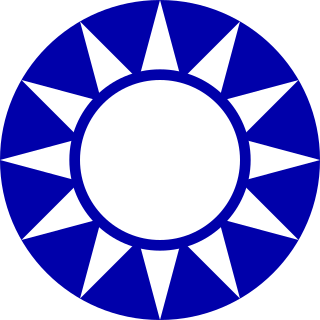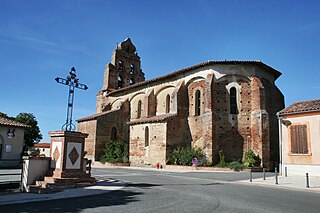
The politics of Japan are conducted in a framework of a dominant-party bicameral parliamentary representative democratic constitutional monarchy. A hereditary monarch, currently Emperor Naruhito, serves as head of state while the Prime Minister of Japan, currently Shigeru Ishiba since 2024, serves as the elected head of government.

The Kuomintang (KMT), also referred to as the Guomindang (GMD), the Nationalist Party of China (NPC) the Chinese Nationalist Party (CNP), or the National People's Party of China, is a major political party in the Republic of China, initially based on the Chinese mainland and then in Taiwan since 1949. The KMT is a centre-right to right-wing party and the largest in the Pan-Blue Coalition, one of the two main political groups in Taiwan. Its primary rival is the Democratic Progressive Party (DPP), the largest party in the Pan-Green Coalition. As of 2024, the KMT is the largest single party in the Legislative Yuan. The current chairman is Eric Chu.

Kyūdō is the Japanese martial art of archery. Kyūdō is based on kyūjutsu, which originated with the samurai class of feudal Japan. In 1919, the name of kyūjutsu was officially changed to kyūdō, and following the example of other martial arts that have been systematizing for educational purposes, kyūdō also reorganized and integrated various forms of shooting that had been used up until then. Many practitioners may refer to themselves as yumihiki (弓引き), or 'ones who draw the bow'. Kyūdō is practised by over a hundred thousand people worldwide. The bow they use is called a yumi (弓). It has an asymmetrical shape and length of more than 2.0 metres, and its use is characterized by the archer gripping the lower third of the bow stave to shoot.

The National Diet is the national legislature of Japan. It is composed of a lower house, called the House of Representatives, and an upper house, the House of Councillors. Both houses are directly elected under a parallel voting system. In addition to passing laws, the Diet is formally responsible for nominating the prime minister. The Diet was first established as the Imperial Diet in 1890 under the Meiji Constitution, and took its current form in 1947 upon the adoption of the post-war constitution. Both houses meet in the National Diet Building in Nagatachō, Chiyoda, Tokyo.

Komeito, formerly New Komeito (NKP) and commonly referred to as simply Komei, is a political party in Japan founded by the leader of Soka Gakkai, Daisaku Ikeda, in 1964. It is generally considered centrist and socially conservative. Since 2012, it has served in government as the junior coalition partner of the nationalist and conservative governments led by the Liberal Democratic Party.

The Liberal Democratic Party, frequently abbreviated to LDP or Jimintō (自民党), is a major conservative and nationalist political party in Japan. Since its foundation in 1955, the LDP has been in power almost continuously—a period called the 1955 System—except between 1993 and 1994, and again from 2009 to 2012.

The Taishō era was a period in the history of Japan dating from 30 July 1912 to 25 December 1926, coinciding with the reign of Emperor Taishō. The new emperor was a sickly man, which prompted the shift in political power from the old oligarchic group of elder statesmen to the Imperial Diet of Japan and the democratic parties. Thus, the era is considered the time of the liberal movement known as Taishō Democracy; it is usually distinguished from the preceding chaotic Meiji era and the following militaristic-driven first part of the Shōwa era.

The House of Representatives is the lower house of the National Diet of Japan. The House of Councillors is the upper house. The composition of the House is established by Article 41 and Article 42 of the Constitution of Japan. The House of Representatives has 465 members, elected for a four-year term. Of these, 176 members are elected from 11 multi-member constituencies by a party-list system of proportional representation, and 289 are elected from single-member constituencies.

The Democratic Party of Japan was a centrist to centre-left, liberal or social-liberal political party in Japan from 1998 to 2016.

The Japanese Communist Party is a communist party in Japan. Founded in 1922, it is the oldest political party in the country. It has 250,000 members as of January 2024, making it one of the largest non-governing communist parties in the world. The party is chaired by Tomoko Tamura, who replaced longtime leader Kazuo Shii in January 2024.

The Social Democratic Party is a political party in Japan that was established in 1996. Since its reformation and name change in 1996, it has advocated pacifism and defined itself as a social-democratic party. It was previously known as the Japan Socialist Party.

Seysses-Savès is a commune in the Gers department in southwestern France.

Seyches is a commune in the Lot-et-Garonne department in south-western France.

Hakuchō Masamune, born Tadao Masamune, was a noted Japanese critic and writer of fiction, and a leading member of the Japanese Naturalist school of literature.

Dōmei Seisha was a political party in Japan.

Dōshi Seisha was a political party in Japan.

Rikken Kakushintō was a political party in Japan.

The Constitutional Democratic Party of Japan is a liberal political party in Japan. It is the primary centre-left party in Japan, and as of 2024 is the second largest party in the National Diet behind the ruling Liberal Democratic Party (LDP).



















